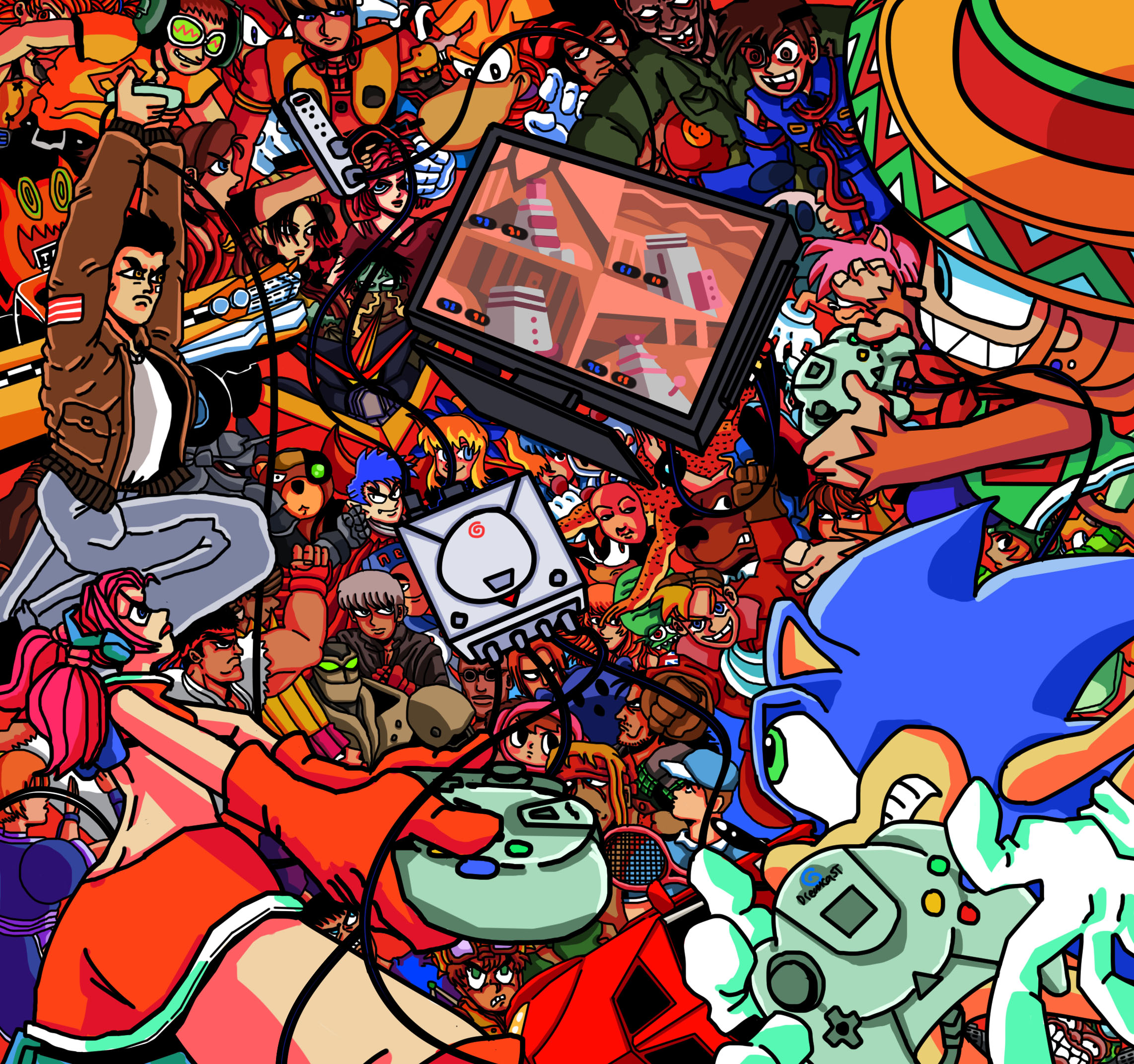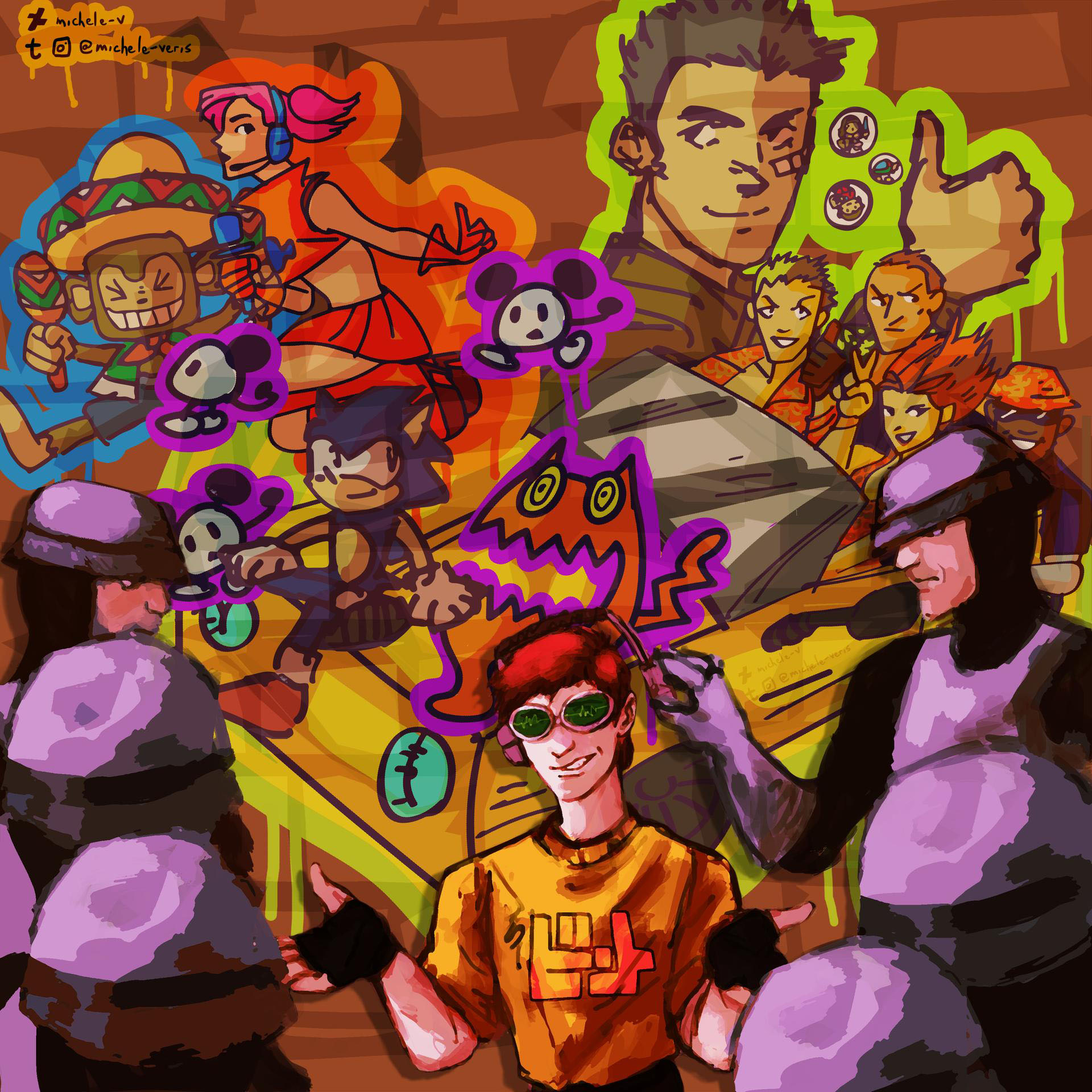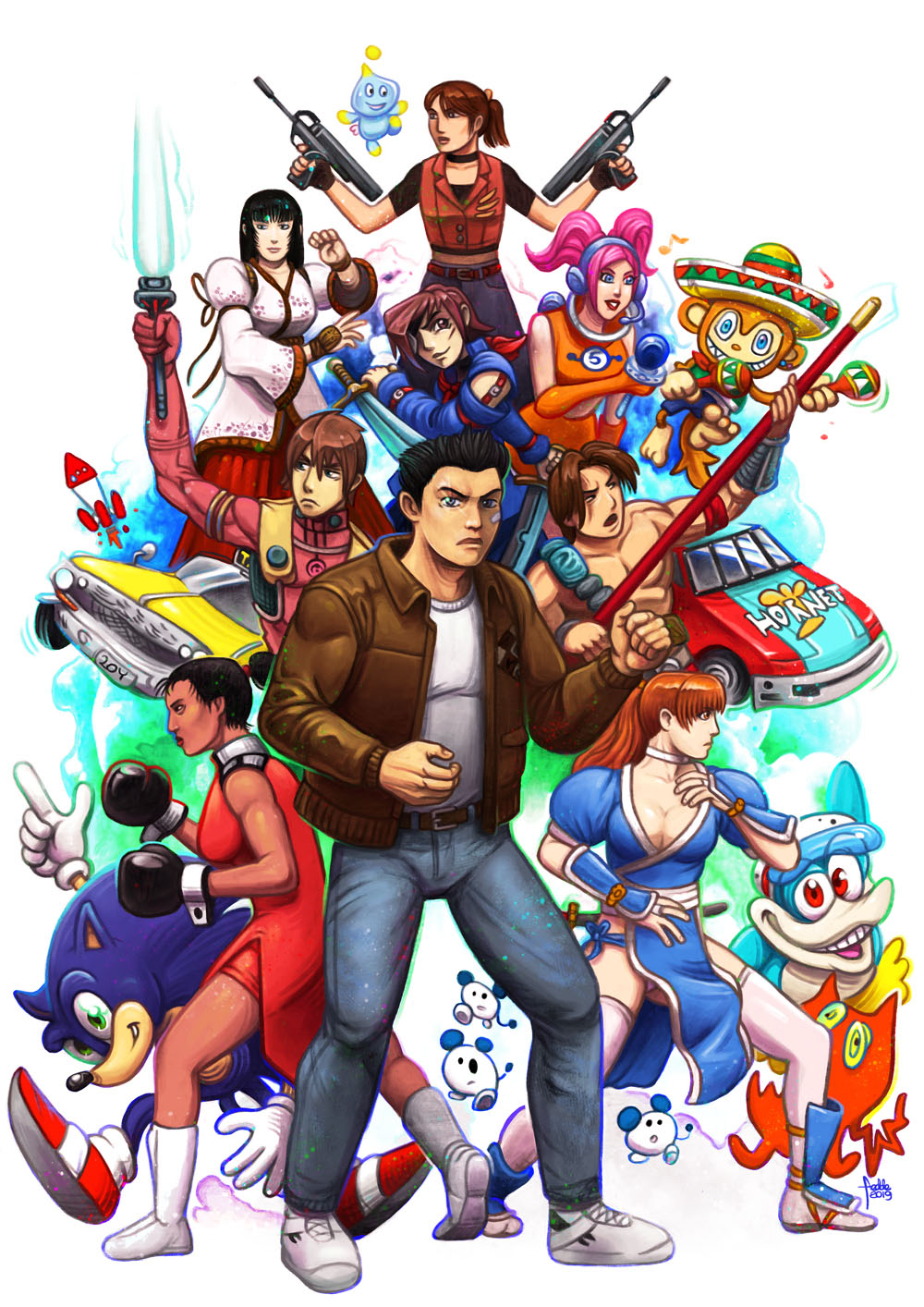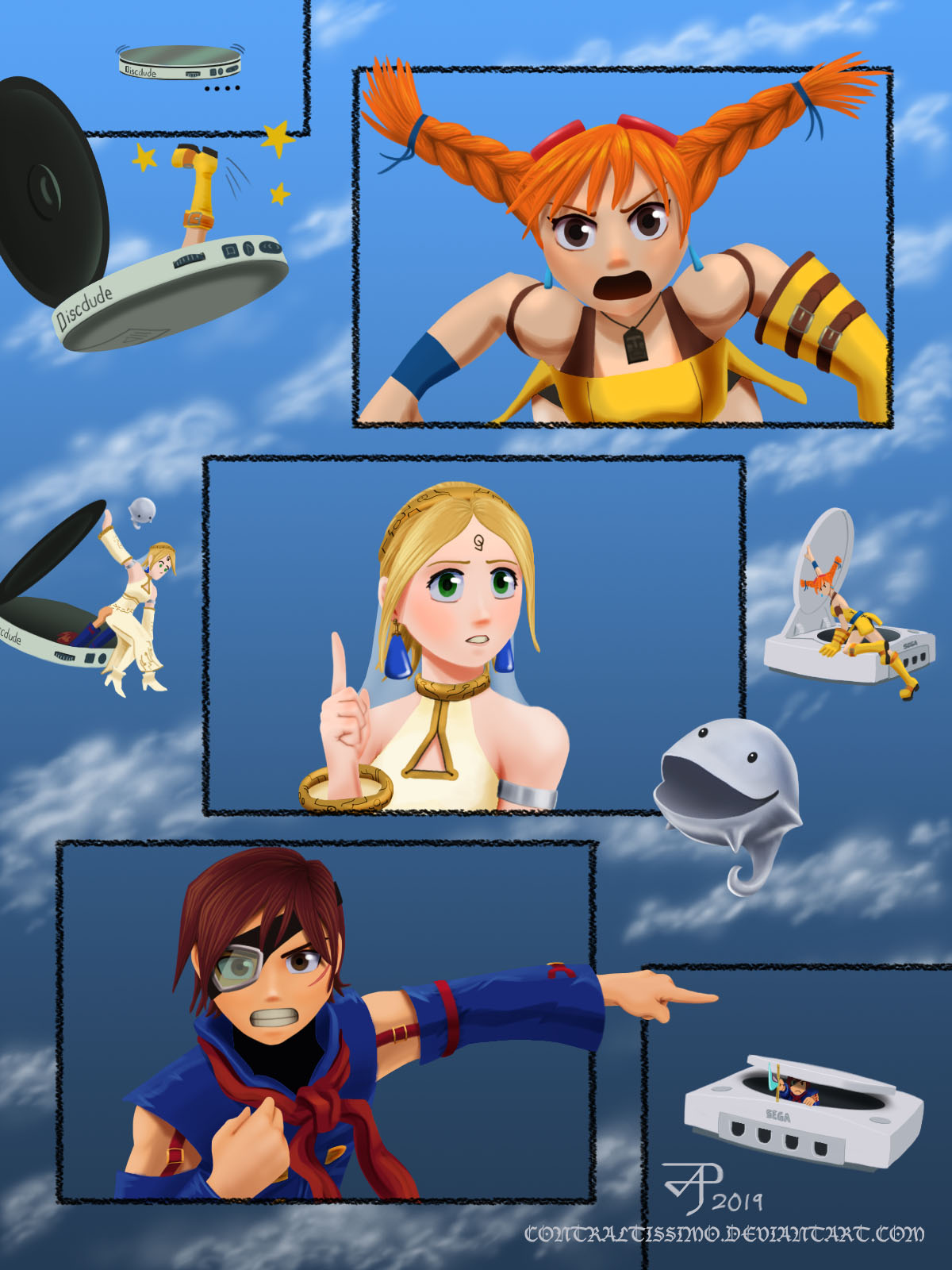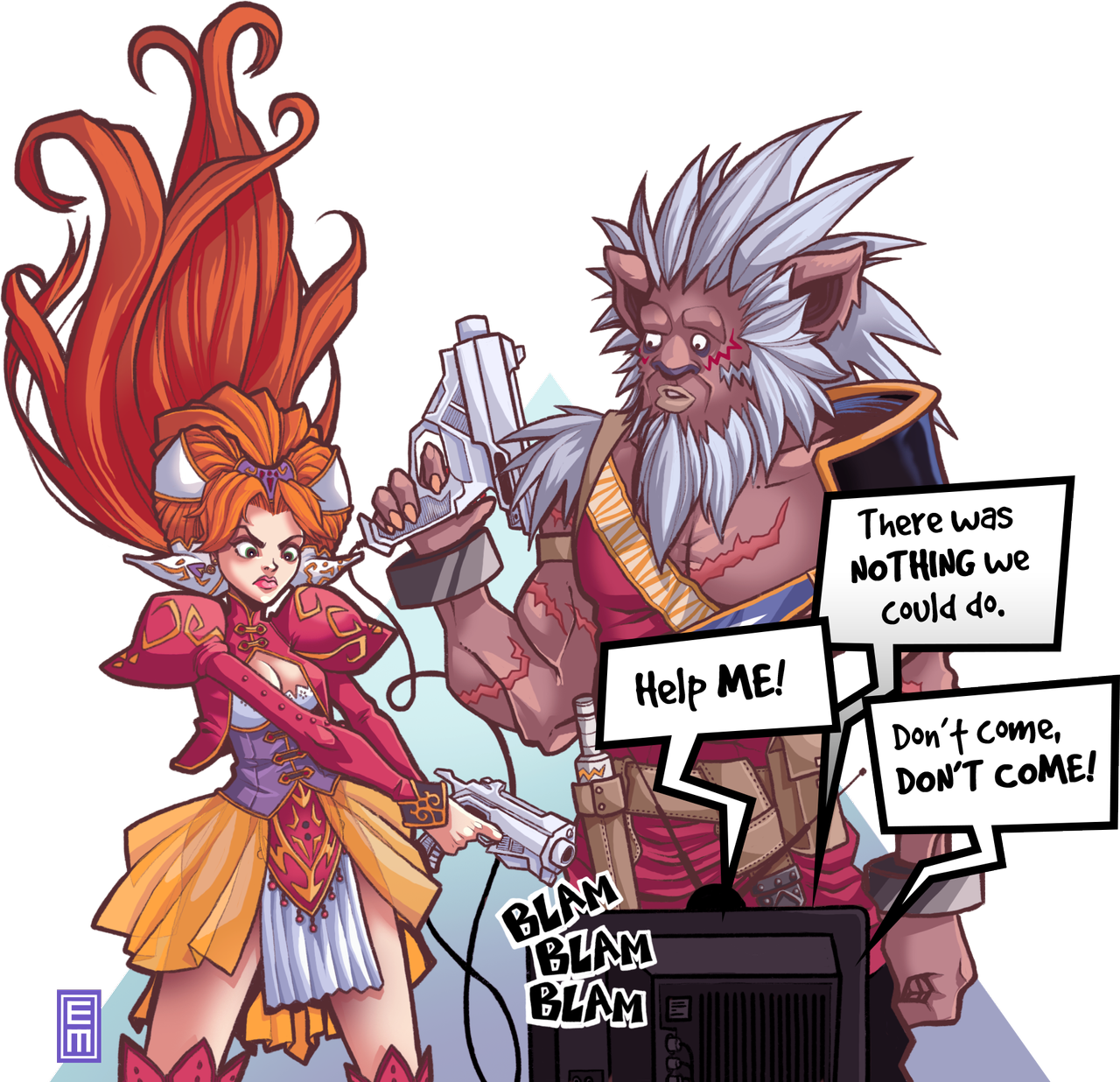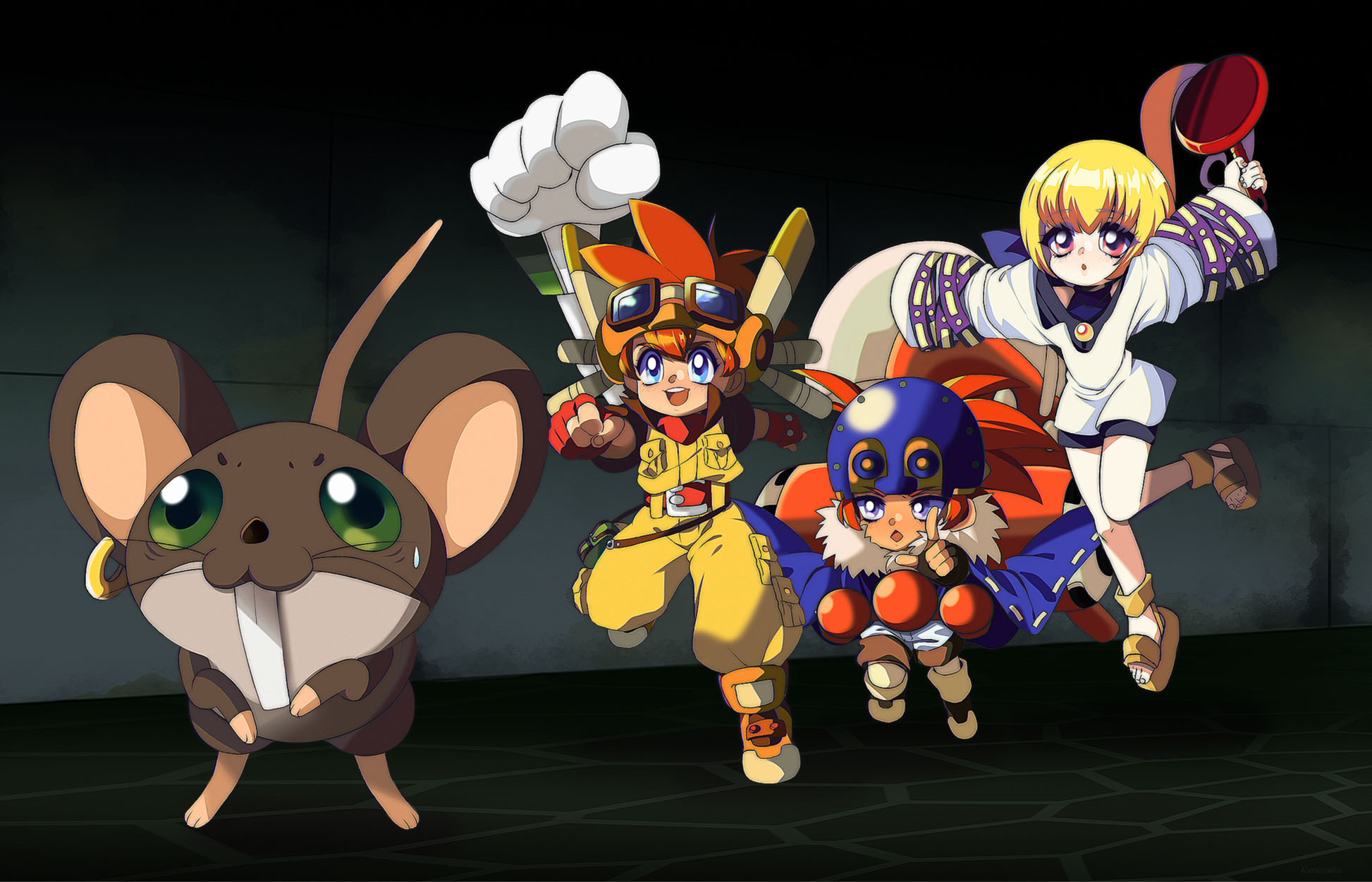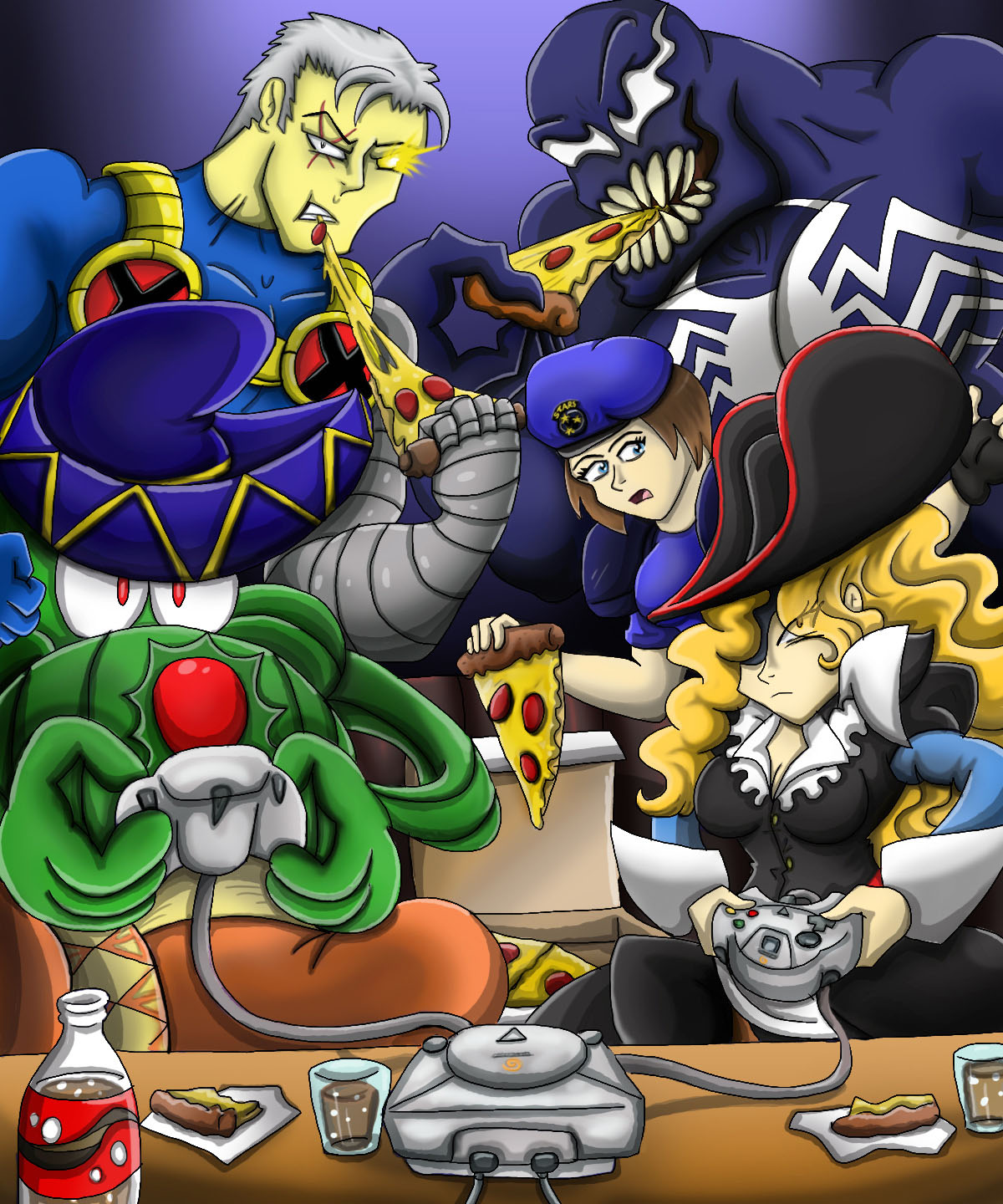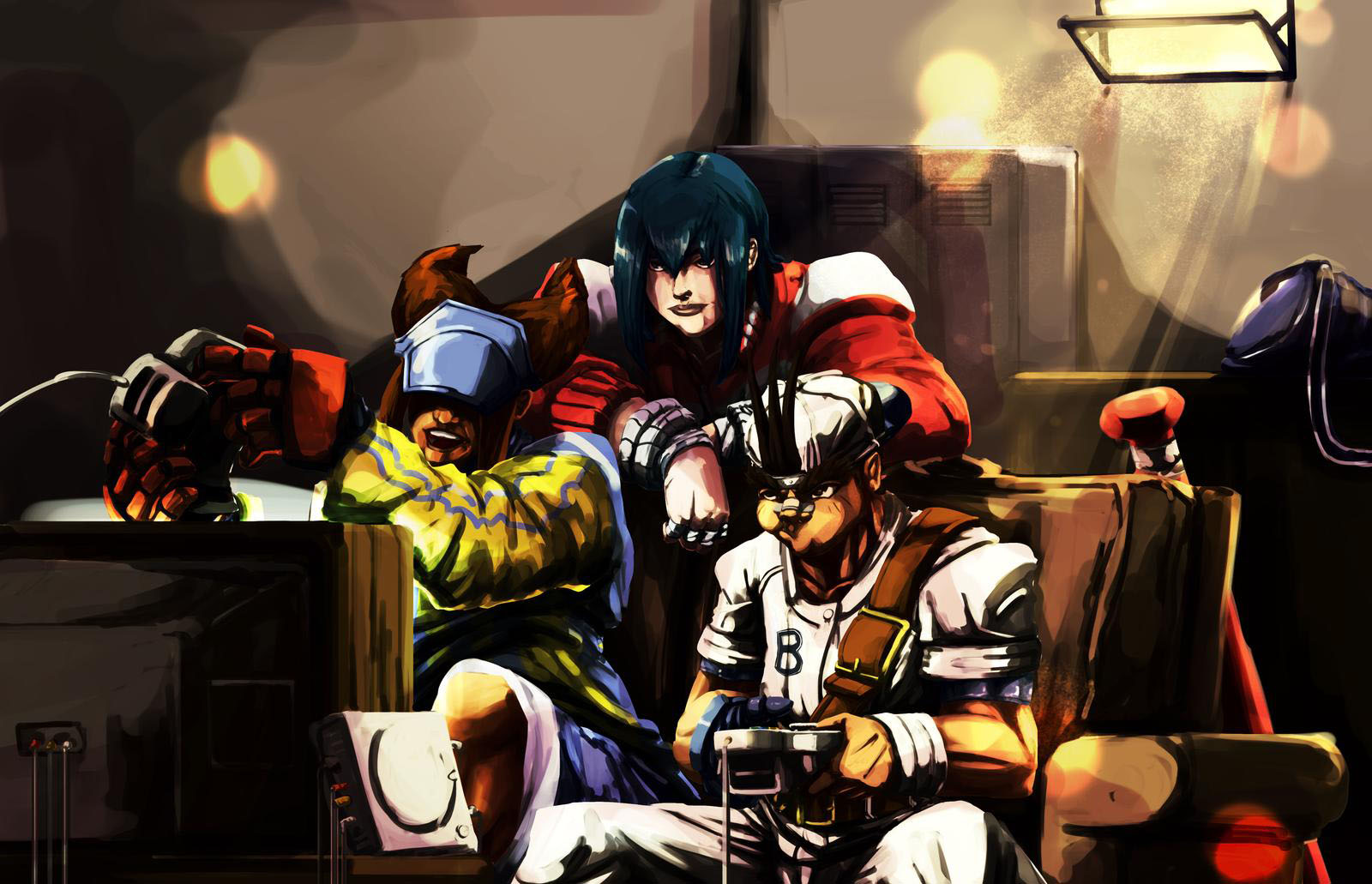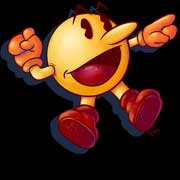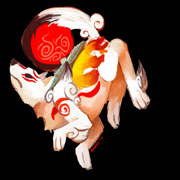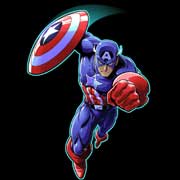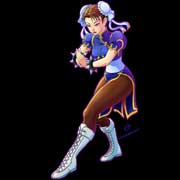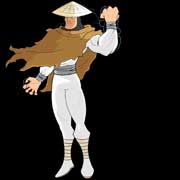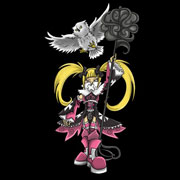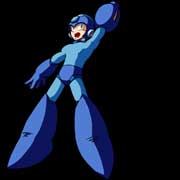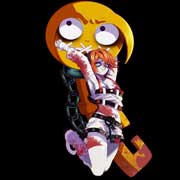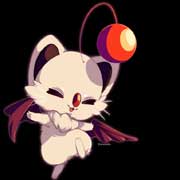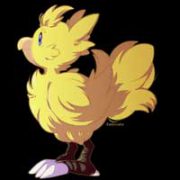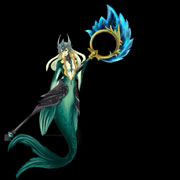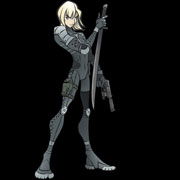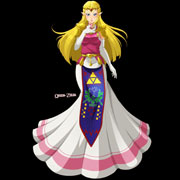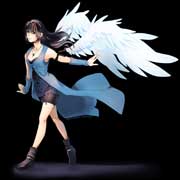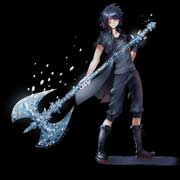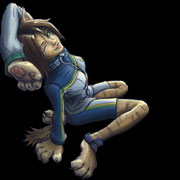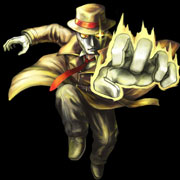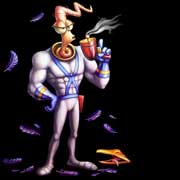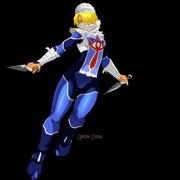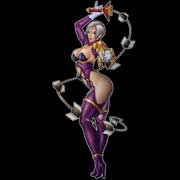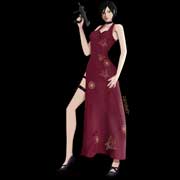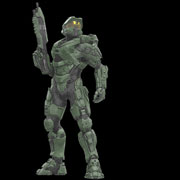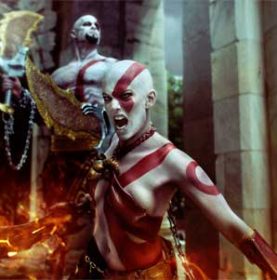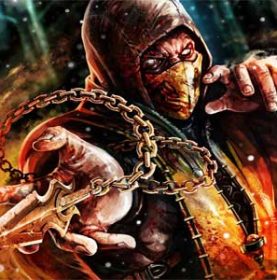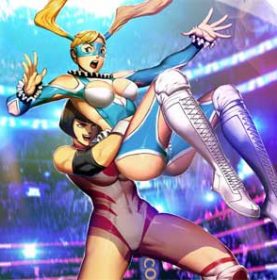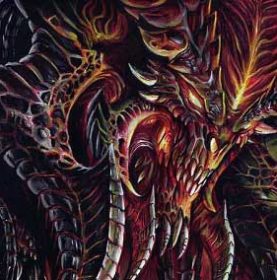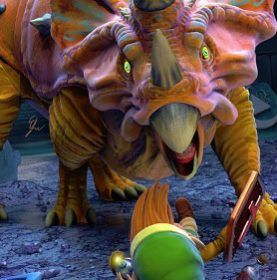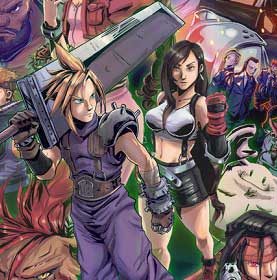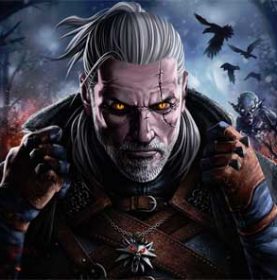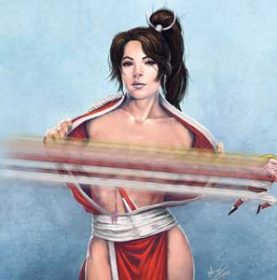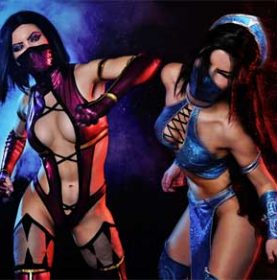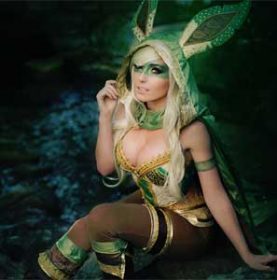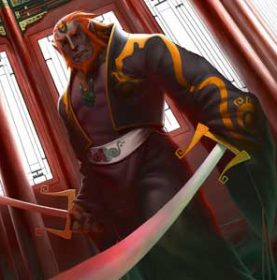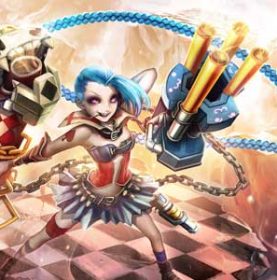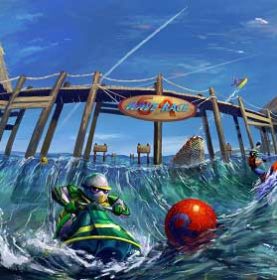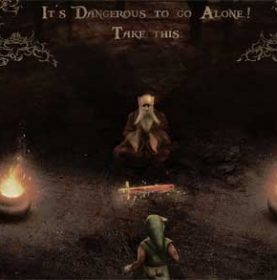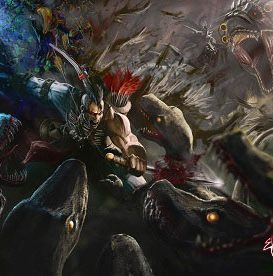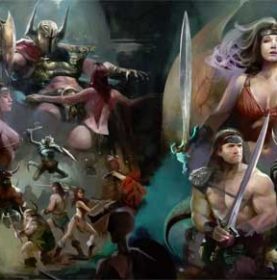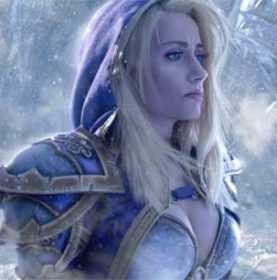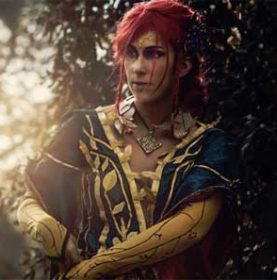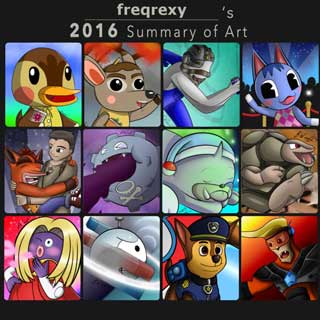Let us celebrate the 20th Anniversary of the Sega Dreamcast a bit :)
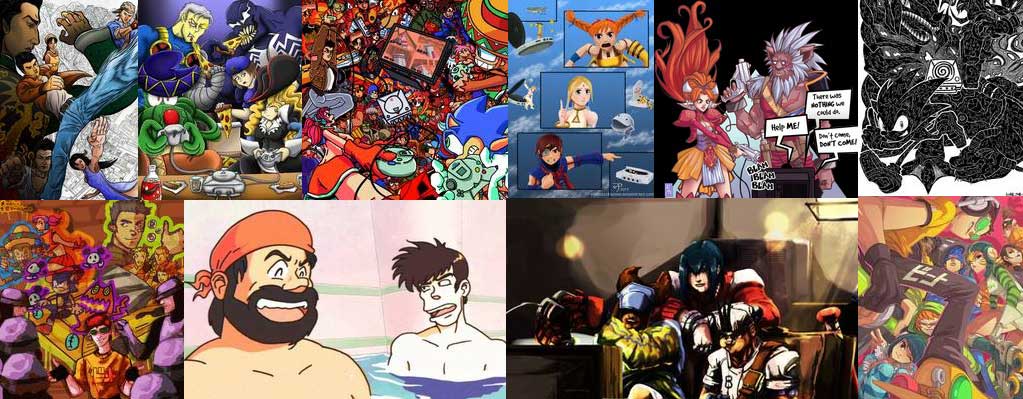
The Sega Dreamcast, Sega’s last big video game console launched in the USA on September 9, 1999.
Reason enough for the Game-Art-HQ Community to create a little anniversary tribute to the revolutionary game console and some of the games we loved on it!
Be they the Sonic Adventure games, Shenmue that is finally getting a third game after almost two decades of waiting and hoping, Jet Set Radio, also known as Jet Grind Radio, Marvel vs. Capcom 2 which set new standards for tag-based fighting games, Project Justice, the sequel to Rival Schools, Blue Stinger with a very special illustration, the excellent rhythm game Samba De Amigo with its funny maracas controllers and the J-rpg’s Skies of Arcadia and Grandia 2. Hell, even the pretty unknown Evolution 2 is a part of our tribute!
The Sega Dreamcast did not get thousands of games and it changed Sega’s role in the video game industry completely, but it also inspired and influenced other video game hardware and software developers. Today, we want to celebrate this ill-fated console on its 20th Anniversary in North America!
|
Sega Dreamcast Tribute by TheSadSrook |
Huh? That wall was already like this (hehe) by Michelle V. |
Sailors, Boxers, Fighters, and Daytoooooooooooonaaa!
by Fedde
So many games..so many great game characters…can you name all of them?
Srook created the maybe biggest Sega Dreamcast Crossover Fan Art in existence with this piece, even I can’t name all of the characters in it. Michelle, however, had the idea to include some of the most popular Dreamcast game characters into a Grafitti made by Beat, the first playable character in Jet Set Radio..will Captain Onishima finally get this guy now? Fedde however did not only include the more popular characters like Ryu Hazuki and Sonic but also covered the not so known games like Ready 2 Rumble Boxing and even the Hornet car from Daytona USA!
Here is what the artists have to say about their works:
TheSadSrook:
“My contribution to Game-Art-HQ’s Sega Dreamcast 20th Anniversary Tribute.
To be honest…I never had a Dreamcast… But I wanted to draw a cool composition with a lot of characters (some of whose games I’ve played on other systems). I love video games so it was quite to my enjoyment to research so many characters and games! I’d say the only Dreamcast game I really played was Quake 3 arena (which is what the characters are supposedly playing). In favor of doing the large composition I had a bit of shoddy line work, so…don’t zoom in too much hahah!
Anyway, to all you gamer’s who grew up Sega, I hope you can enjoy my contribution to this tribute. Thank you!”
Michelle V.:
“I wanted my contribution to focus on Jet Set Radio, since that game is by far my favorite from the console. My theme was: “different Sega Dreamcast characters in a Jet Set Radio Scenario” and it was a challenge since I had no idea of how I could ever represent it. I had the feeling I should play a bunch of Dreamcast games before I started this piece. Then, the concept of street art should be the best and the fastest idea (I think?) then here it is!
I included the following games beside Jetz Set Radio:
Crazy Taxi, with the four characters from the first game, Chu Chu Rocket, Sonic Adventure, Space Channel 5, Samba de Amigo
Shenmue (little easter eggs: I love the fact Ryo loves capsule toys, so I made Alis from Phantasy Star, Alex Kidd and Opa-Opa from Zillion/Fantasy Zone)”
|
Sonic Adventure 1 & 2 |
Shenmue 1 &2 |
Sonic Adventure and Shenmue, two of the biggest highlights of the Sega Dreamcast!
Since Sega released the first Sonic the Hedgehog game back in 1991, the character became almost as popular as Super Mario for a while, fans expected that Sega would finally release a Sonic game in the third dimension that would show Mario 64 that Sonic is still the fastest and coolest video game character out there, and both Sonic Adventure and its sequel didn’t disappoint the majority of the fans. There were big differences to the classic Sonic games, and some fans did not like the big change of the art style in them, but the gameplay was just great, we also got cool new characters like Shadow and well..Big the Cat
Shenmue, however, was nothing but revolutionary, just like the Sega Dreamcast itself. Yu Suzuki created a masterpiece with realistic characters, not seen in that form before in a video game. The story still captured many new players of the recently released HD remasters of both games. I also doubt the successful Yakuza games would exist without Shenmue.
I am sure there are many thousand people out there that hope they will be able to help Ryu Hazuki to finally meet the murder of his father, Lan Di and ask the citizens around many many questions. That both artists had a lot to say about their entries and the games they choose for our tribute just says a lot about the games and their magic!
Luke the Ripper about his Sonic Adventure Tribute:
Skull-the-Kid about his Tribute to Shenmue 1 & 2
“My entry to Game-Art-HQ’s Sega Dreamcast 20th Anniversary Tribute, centered on the first two Shenmue games. Especially the second, which is the only one I actually played. With a tiny reference to the upcoming third one.
I wanted to address the continuity between the games because one of the aspects that have always impressed me the most about Shenmue is that it’s telling a single, sprawling story in many games, just like a book composed of many tomes.
It makes you experience a saga in a way I haven’t seen anywhere else in videogames. I mean, by now it’s a widespread norm to end a game by hinting at a sequel that will reprise the same characters and/or situations, but it is not the same thing. Nor is building an all-encompassing narrative through the years or even decades with a series where every new episode links back to the previous ones with various degrees of retcon. The closest thing I’ve seen is probably Mass Effect but it still isn’t the same, as the story of the single games (at least the first one, I never went further) maintain self-sufficiency that Shenmue and its sequel lack.
The ambition of this project makes you feel part of a story that actually is as basic as can be, a martial arts epic set in a contemporary world where it wouldn’t really fit (as the absence of firearms demonstrates) and because of that it oddly manages to feel even more like a fairy tale than it would otherwise. I may have done a classic poster-like piece, focused on the characters and the fighting, but, enjoyable as they might be, they certainly aren’t what I find to be games’ strongest points. Where they truly shine are the settings, which are so immersive that I couldn’t help but feel captivated and care for its heroes.
What I enjoyed the most is the palpable urban atmosphere conveyed through its peculiar gameplay rhythms, the concrete ways through which the game made you feel the cities’ life. In fact, if I had to choose a single detail that has stayed with me the most it would be the interaction with the common population. It might be relatively limited, undifferentiated between the various NPCs, but it also links them and the player -impersonating a disoriented foreigner- practically with the world, they inhabit, creating an illusion of entanglement. Yes, I especially loved the option of asking for directions and following literally anyone as they brought me to my destination.
And I’m slightly bummed by the fact that it apparently isn’t featured in Shenmue III. Which inevitably brings us to the paradox that this new chapter is made with a lesser budget than the originals in an era where the average gaming blockbuster have reached if not surpassed those sums. That’s why keeping it faithful to the original formula might be a wise choice, probably ensuring that those millions are well spent and not dissipated pursuing unreachable present-day standards. I’m willing to take the risk of an outdated open-world experience as it could be different from the mechanics that homogenize its modern brethren and I think with some smoothing it could still stand on its own feet exactly because nothing else has done the very same thing.
The rural setting also looks like a smart direction for the same reason. In a current game, I certainly prefer the idea of exploring believable reproductions of small urban centers rather than the brutal stylization of a big city that in its new proportions would feel particularly fake. The contrast between the villages and the metropolis of the past game is also intriguing, an unconventional diminishing progression.”
|
Skies of Arcadia |
Grandia 2 by Ed Moffatt |
Evolution: The World of Sacred Device
by Quartette
Skies of Arcadia, Grandia 2 and Evolution: The World of Sacred Device, do you remember these great J-RPG’s?
While the Sega Dreamcast was mostly known for its many great Arcade Games, it also got a couple of J-RPG’s actually. Skies of Arcadia is probably the biggest and most ambitious of its genre on the system, only rivaled by Grandia 2 in its length. It is one of these big games of the past that never got a sequel or even ports to newer systems sadly. It only got a slightly enhanced..but also censored port to the Nintendo Gamecube. Btw. did you know that the first Grandia was actually a Sega Saturn exclusive when it launched?
Evolution: The World of Sacred Device is probably almost completely forgotten today. It was much smaller in size but full of charming characters like Mag and Gre! Its gameplay was great while it was pretty much a standard j-rpg without a big story and mostly about fighting in the dungeons. Evolution got a sequel and also ports to the Playstation 2 and the Nintendo and even to the NeoGeo Pocket Color!
Contraltissimo about his take on the legendary Skies of Arcadia
“I have never actually owned or even operated a Dreamcast. But I do own a GameCube. And somehow I’ve also had the exceptionally good fortune to be exposed to an obscure little Dreamcast port that was adopted into the GameCube family, called Skies of Arcadia.
I’m not sure I can really quantify what makes the game so incredibly, incredibly special. There is just a kind of magic about it. It’s what an adventure should be. Dashing young heroes. Mysterious powers. Literally high-flying adventure and a boundless grinning tenacity. It’s as if the designers strung the very spellings of joy and delight into their codes. They certainly made the hardware fun enough….
I’ve never owned a Dreamcast, but I do in fact own the Dreamcast game discs of Skies of Arcadia! And I can attest to the fact that Yes, if you put them in a normal CD player instead of their beloved Dreamcast console, the characters will scold you! It’s a charming little exchange that you should…. honestly never go looking for. But! I decided to showcase it anyway.
Alas, poor Dreamcast, I never knew you. ….Or I haven’t known you yet. Hah, perhaps I am channeling a bit of game’s protagonist–nothing is impossible! But here’s to you and that game of yours with charm to burn, Skies of Arcadia.”
Ed Moffatt about his Grandia 2 Tribute
“My brother and I saved up our pocket money, clubbed together and bought a Dreamcast on release day. There are so many games I absolutely love from that era, including Sonic Adventure, Power Stone and Shenmue to name just a few.
I picked 2 of my favs to combine together for this tribute. Here we have Millenia and Mareg (from Grandia 2) playing a classic Dreamcast light-gun shooter (House of the Dead 2) together. Millenia doesn’t seem to understand the concept of “not killing the innocents”…”
Quartette about his tribute to Evolution: The World of Sacred Device
“The Dreamcast is still one of my top favourite consoles, and likewise, Evolution is still one of my favourite RPGs. I remember when I was a kid and noticed the game case at my friend’s house and was like “WHAT IS THIS I NEED TO PLAY IT”. Granted, I kind of have to blame Digimon for it since at the time I was very much into it and Mag has that same weird-big-hair-and-goggles look as Tai does. That, and I was always open to cute animu games.
The Gamecube port of both games is okay, but I wish they’d left the Japanese voice acting intact and not replaced it with weird English ones. One of the villains has the same VA as Mr.Ratburn from Arthur and it throws me off every time, pff.”
Samba de Amigo by Freqrexy
Samba! Samba de Janeiro… AMIGO!
Back, 20 years ago rhythm games were still something new. Mostly gaining popularity through the Bemani /Dance Dance Revolution games by Konami. Sega wanted to get into the music-games market as well and created the Arcade & Dreamcast game Samba De Amigo that had its unique Maracas controllers that were super fun to use with the game. Today, you pay around $100-200 for the game + these controllers. The game got later ported to the Nintendo Wii!
Rexy about her Samba de Amigo piece and her experiences with the Sega Dreamcast:
I have very little experience with the Dreamcast. I never owned one, and the only times I touched one were at gaming conventions, running either Sonic Adventure or Jet Set Radio. A lot of my experience with game releases on the system was through ports elsewhere, and it’s through those that made me appreciate what Sega set out to do with their tech. The graphics processing opened the doors to the 6th console generation, online gaming marked a first for a home console, the VMU had way more functions beyond a standard memory card… specs-wise, it was way ahead of its time and the library of games utilized its power in the best ways possible.
I chose to do Samba de Amigo because the game’s colorful aesthetic looked desperate for me to capture it. This title was more emphasized on a creative rhythm game idea with wired maracas that you point and shake to the beat. From my experiences with the arcade version and Wii port, the concept was something never seen before and the music/presentation cemented the addictive nature to keep getting better.
If you ever see it on display at a convention, give it a go and let your inner carnival animal jump out! This image was done through the Procreate software on the iPad – the tool of the trade for all my GAHQ contributions. The vision I had with this was bringing Amigo onto a Dreamcast shaped platform, with Rio and Linda offering support in the background – the two members of his backing troupe you’d see most often. Bizarrely, the bulk of this work was done with a week left on the project as a whole and it primarily related to applying color and shading. If you know what’s good for you, try not to go down that route yourself! Nevertheless, the image turned out how I envisioned it, and the overall mood and iconic orange swirl made a perfect match.
It felt fun to be in a GAHQ project that isn’t related to Pokémon for once!
|
Blue Stinger by DerZocker |
Jet Set Radio by Edwin Huang |
Blue Stinger and Jet Set Radio, these games brought the action to the Dreamcast!
It took a while until the Sega Dreamcast got Resident Evil: Code Veronica and the ports of RE 2 &3 but the console had a kinda similar game with Blue Stinger as a launch game already. Sure, the “horror” experience was very different and it was really not the best of its kind, even in 1999 but it had some strengths and for sure funny characters..and a very special kind of humor as you can see in DerZocker’s tribute and the video below.
Jet Set Radio was the first “big” game with the Cell-Shading technique that let the game look a lot more like a comic. This game had an amazing soundtrack by Hideki Naganuma, a fun story and is probably still the coolest graffiti sprayer simulation out there. Edwin from the UDON Entertainment crew just mentioned “Dreamcast is the best console of all time. nuff said ”
Indeed…’nuff said 
DerZocker about Blue Stinger and the Dreamcast
|
Marvel vs. Capcom 2 by Shinragod |
Project Justice (Rival Schools 2) |
Let’s fight..but why just 1vs1 when there can be Tag Team Action with Schoolkids and Marvel Heroes?
Marvel vs. Capcom 2 set new standards for tag-based fighting games, 3 characters per player, up to six on-screen, massive sprite action not seen before in a fighting game and also a giant roster of 56 characters. Well, we could be glad that Capcom changed how you could “buy” all characters in the game because you would need to have access to an arcade version of the game in the original Japanese version of MVC2 actually.
Project Justice, also by Capcom did not set any new standards but still was a great and very fun fighting game with the badass students like Batsu, Kyosuke and the here illustrated sports team of the hot-tempered Shoma, the cool Roberto and the smart Natsu.
I believe this game already had a problem in the west because it was not named simply named Rival Schools 2 (or 3 if you count the Japan-only update to the first game) here. I mean, nothing about the name screams “fighting game” and I guess it kinda bombed =/
Shinragod about Marvel vs. Capcom 2 and the characters he drew for his Dreamcast Tribute
The Game-Art-HQ Community Sega Dreamcast Tribute, some trivia
The Project started on Mar 26. 2019
The first submitted artwork was the Project Justice one, on the 2nd June already
The last one was the Samba de Amigo piece, submitted just yesterday on the 8th September
Two more pieces were claimed but due to different reasons, the artists couldn’t make them =/
Thanks a ton again at all participating artists and especially to all the developers from Sega and the other companies who created the Dreamcast hardware and the awesome games we played on the system!!
